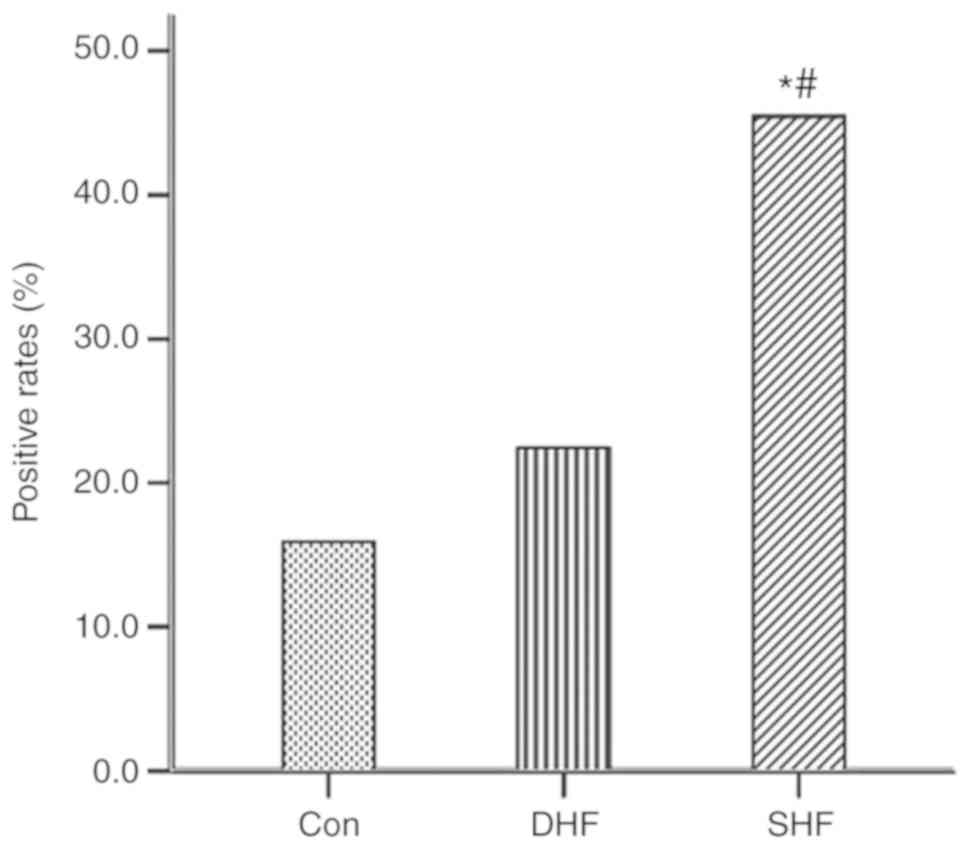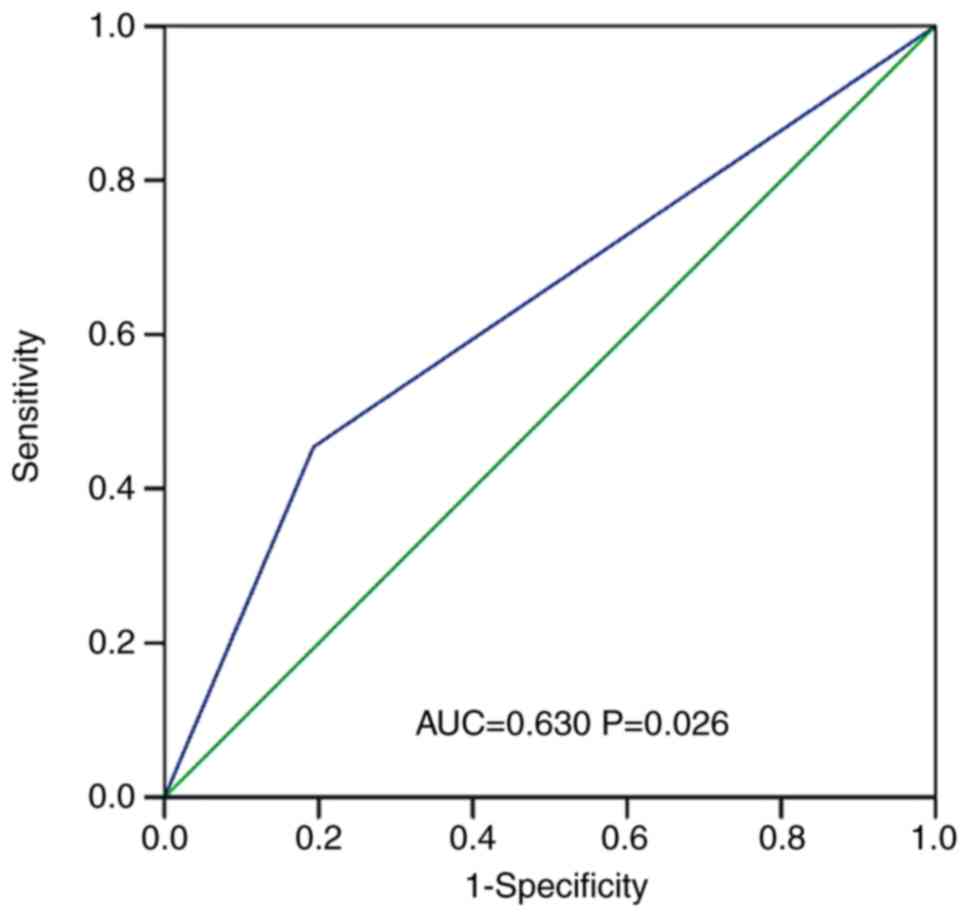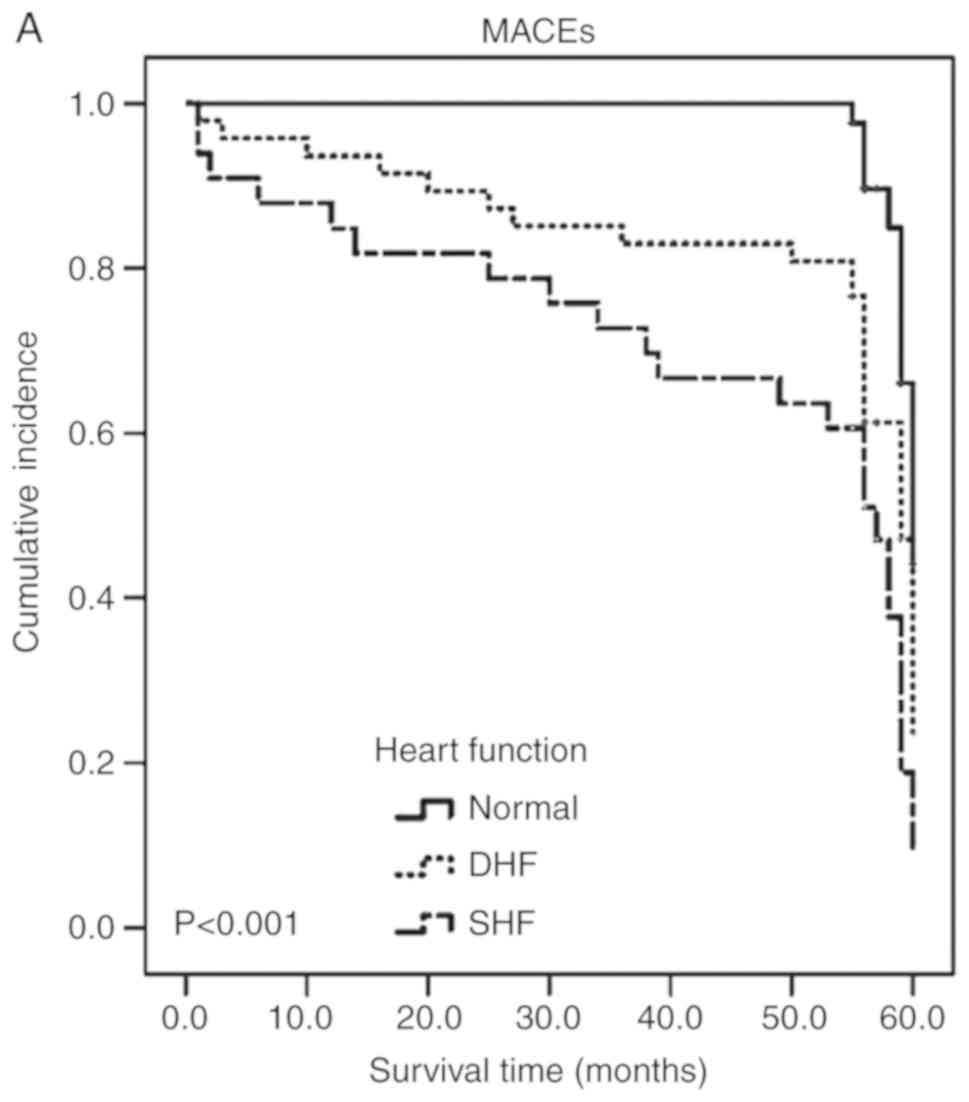|
1
|
Tang X, Liu P, Li R, Jing Q, Lv J, Liu L
and Liu Y: Milrinone for the treatment of acute heart failure after
acute myocardial infarction: A systematic review and meta-analysis.
Basic Clin Pharmacol Toxicol. 117:186–194. 2015. View Article : Google Scholar : PubMed/NCBI
|
|
2
|
Chen J, Hsieh AF, Dharmarajan K, Masoudi
FA and Krumholz HM: National trends in heart failure
hospitalization after acute myocardial infarction for medicare
beneficiaries: 1998–2010. Circulation. 128:2577–2584. 2013.
View Article : Google Scholar : PubMed/NCBI
|
|
3
|
Patel PA and Hernandez AF: Targeting
anti-beta-1-adrenergic receptor antibodies for dilated
cardiomyopathy. Eur J Heart Fail. 15:724–729. 2013. View Article : Google Scholar : PubMed/NCBI
|
|
4
|
Generali E, Folci M, Selmi C and Riboldi
P: Immune-mediated heart disease. Adv Exp Med Biol. 1003:145–171.
2017. View Article : Google Scholar : PubMed/NCBI
|
|
5
|
Jahns R, Boivin V, Siegmund C, Inselmann
G, Lohse MJ and Boege F: Autoantibodies activating human beta
1-adrenergic receptors are associated with reduced cardiac function
in chronic heart failure. Circulation. 99:649–654. 1999. View Article : Google Scholar : PubMed/NCBI
|
|
6
|
Mobini R, Staudt A, Felix SB, Baumann G,
Wallukat G, Deinum J, Svensson H, Hjalmarson A and Fu M:
Hemodynamic improvement and removal of autoantibodies against
beta1-adrenergic receptor by immunoadsorption therapy in dilated
cardiomyopathy. J Autoimmun. 20:345–350. 2003. View Article : Google Scholar : PubMed/NCBI
|
|
7
|
Gao Y, Liu HR, Zhao RR and Zhi JM:
Autoantibody against cardiac beta1-adrenoceptor induces apoptosis
in cultured neonatal rat cardiomyocytes. Acta Biochim Biophys Sin
(Shanghai). 38:443–449. 2006. View Article : Google Scholar : PubMed/NCBI
|
|
8
|
Nussinovitch U and Shoenfeld Y: The
clinical significance of anti-beta-1 adrenergic receptor
autoantibodies in cardiac disease. Clin Rev Allergy Immunol.
44:75–83. 2013. View Article : Google Scholar : PubMed/NCBI
|
|
9
|
Pei J, Li N, Chen J, Li X, Zhang Y, Wang
Z, Zhang P, Cao K and Pu J: The predictive values of
beta1-adrenergic and M2 muscarinic receptor autoantibodies for
sudden cardiac death in patients with chronic heart failure. Eur J
Heart Fail. 14:887–894. 2012. View Article : Google Scholar : PubMed/NCBI
|
|
10
|
Iwata M, Yoshikawa T, Baba A, Anzai T,
Mitamura H and Ogawa S: Autoantibodies against the second
extracellular loop of beta1-adrenergic receptors predict
ventricular tachycardia and sudden death in patients with
idiopathic dilated cardiomyopathy. J Am Coll Cardiol. 37:418–424.
2001. View Article : Google Scholar : PubMed/NCBI
|
|
11
|
Störk S, Boivin V, Horf R, Hein L, Lohse
MJ, Angermann CE and Jahns R: Stimulating autoantibodies directed
against the cardiac beta1-adrenergic receptor predict increased
mortality in idiopathic cardiomyopathy. Am Heart J. 152:697–704.
2006. View Article : Google Scholar : PubMed/NCBI
|
|
12
|
Nussinovitch U and Shoenfeld Y:
Intravenous immunoglobulin-indications and mechanisms in
cardiovascular diseases. Autoimmun Rev. 7:445–452. 2008. View Article : Google Scholar : PubMed/NCBI
|
|
13
|
Thygesen K, Alpert JS, Jaffe AS, Simoons
ML, Chaitman BR, White HD; Writing Group on the Joint
ESC/ACCF/AHA/WHF Task Force for the Universal Definition of
Myocardial Infarction, ; Thygesen K, Alpert JS, White HD, et al:
Third universal definition of myocardial infarction. Eur Heart J.
33:2551–2567. 2012. View Article : Google Scholar : PubMed/NCBI
|
|
14
|
Paulus WJ, Tschöpe C, Sanderson JE,
Rusconi C, Flachskampf FA, Rademakers FE, Marino P, Smiseth OA, De
Keulenaer G, Leite-Moreira AF, et al: How to diagnose diastolic
heart failure: A consensus statement on the diagnosis of heart
failure with normal left ventricular ejection fraction by the heart
failure and echocardiography associations of the European society
of cardiology. Eur Heart J. 28:2539–2550. 2007. View Article : Google Scholar : PubMed/NCBI
|
|
15
|
Dickstein K, Cohen-Solal A, Filippatos G,
McMurray JJ, Ponikowski P, Poole-Wilson PA, Strömberg A, van
Veldhuisen DJ, Atar D, Hoes AW, et al: ESC guidelines for the
diagnosis and treatment of acute and chronic heart failure 2008:
The Task Force for the diagnosis and treatment of acute and chronic
heart failure 2008 of the European society of cardiology. Developed
in collaboration with the heart failure association of the ESC
(HFA) and endorsed by the European society of intensive care
medicine (ESICM). Eur J Heart Fail. 10:933–989. 2008. View Article : Google Scholar : PubMed/NCBI
|
|
16
|
Nagatomo Y, Yoshikawa T, Kohno T,
Yoshizawa A, Baba A, Anzai T, Meguro T, Satoh T and Ogawa S: A
pilot study on the role of autoantibody targeting the
beta1-adrenergic receptor in the response to beta-blocker therapy
for congestive heart failure. J Card Fail. 15:224–232. 2009.
View Article : Google Scholar : PubMed/NCBI
|
|
17
|
Segovia M, Ganzinelli S, Reina S, Borda E
and Sterin-Borda L: Role of anti-β1 adrenergic antibodies from
patients with periodontitis in cardiac dysfunction. J Oral Pathol
Med. 41:242–248. 2012. View Article : Google Scholar : PubMed/NCBI
|
|
18
|
Liu J, Wang Y, Chen M, Zhao W, Wang X,
Wang H, Zhang Z, Zhang J, Xu L, Chen J, et al: The correlation
between peripartum cardiomyopathy and autoantibodies against
cardiovascular receptors. PLoS One. 9:e867702014. View Article : Google Scholar : PubMed/NCBI
|
|
19
|
American College of Cardiology Foundation
Appropriate Use Criteria Task Force: Society for Cardiovascular
Magnetic Resonance, ; Douglas PS, Garcia MJ, Haines DE, Lai WW,
Manning WJ, Patel AR, Picard MH, Polk DM, Ragosta M, Ward RP and
Weiner RB: ACCF/ASE/AHA/ASNC/HFSA/HRS/SCAI/ SCCM/SCCT/SCMR 2011
appropriate use criteria for echocardiography. A report of the
American college of cardiology foundation appropriate use criteria
task force, American society of echocardiography, American heart
association, American society of nuclear cardiology, heart failure
society of America, heart rhythm society, society for
cardiovascular angiography and interventions, society of critical
care medicine, society of cardiovascular computed tomography, and
society for cardiovascular magnetic resonance endorsed by the
American college of chest physicians. J Am Coll Cardiol.
57:1126–1166. 2011.PubMed/NCBI
|
|
20
|
Limas CJ, Goldenberg IF and Limas C:
Autoantibodies against beta-adrenoceptors in human idiopathic
dilated cardiomyopathy. Circ Res. 64:97–103. 1989. View Article : Google Scholar : PubMed/NCBI
|
|
21
|
Bornholz B, Hanzen B, Reinke Y, Felix SB,
Jahns R, Schimke I, Wallukat G and Boege F: Detection of
DCM-associated β1-adrenergic receptor autoantibodies requires
functional readouts or native human β1-receptors as targets. Int J
Cardiol. 202:728–730. 2016. View Article : Google Scholar : PubMed/NCBI
|
|
22
|
Cabral-Marques O and Riemekasten G:
Functional autoantibodies targeting G protein-coupled receptors in
rheumatic diseases. Nat Rev Rheumatol. 13:648–656. 2017. View Article : Google Scholar : PubMed/NCBI
|
|
23
|
Yalcin MU, Gurses KM, Kocyigit D, Kesikli
SA, Ates AH, Evranos B, Yorgun H, Sahiner ML, Kaya EB, Oto MA, et
al: Elevated M2-muscarinic and β1-adrenergic receptor autoantibody
levels are associated with paroxysmal atrial fibrillation. Clin Res
Cardiol. 104:226–233. 2015. View Article : Google Scholar : PubMed/NCBI
|
|
24
|
Zhang L, Hu D, Li J, Wu Y, Liu X and Yang
X: Autoantibodies against the myocardial beta1-adrenergic and
M2-muscarinic receptors in patients with congestive heart failure.
Chin Med J (Eng1). 115:1127–1131. 2002.
|
|
25
|
Zhang L, Hu D, Shi X, Li J, Zeng W, Xu L
and Cui L: Autoantibodies against the myocardium beta 1-adrenergic
and M2-muscarinic receptors in patients with heart failure.
Zhonghua Nei Ke Za Zhi. 40:445–447. 2001.(In Chinese). PubMed/NCBI
|
|
26
|
Matsui S, Fu ML, Katsuda S, Hayase M,
Yamaguchi N, Teraoka K, Kurihara T, Takekoshi N, Murakami E,
Hoebeke J and Hjalmarson A: Peptides derived from cardiovascular
G-protein-coupled receptors induce morphological cardiomyopathic
changes in immunized rabbits. J Mol Cell Cardiol. 29:641–655. 1997.
View Article : Google Scholar : PubMed/NCBI
|
|
27
|
Becker NP, Goettel P, Mueller J, Wallukat
G and Schimke I: Functional autoantibody diseases: Basics and
treatment related to cardiomyopathies. Front Biosci (Landmark Ed).
24:48–95. 2019. View
Article : Google Scholar : PubMed/NCBI
|
|
28
|
Wallukat G, Nissen E, Morwinski R and
Müeller J: Autoantibodies against the beta- and muscarinic
receptors in cardiomyopathy. Herz. 25:261–266. 2000. View Article : Google Scholar : PubMed/NCBI
|
|
29
|
Nagatomo Y, McNamara DM, Alexis JD, Cooper
LT, Dec GW, Pauly DF, Sheppard R, Starling RC and Tang WH; IMAC-2
Investigators, : Myocardial recovery in patients with systolic
heart failure and autoantibodies against β1-adrenergic receptors. J
Am Coll Cardiol. 69:968–977. 2017. View Article : Google Scholar : PubMed/NCBI
|
|
30
|
Gaasch WH: Deliberations on diastolic
heart failure. Am J Cardiol. 119:138–144. 2017. View Article : Google Scholar : PubMed/NCBI
|
|
31
|
Bornholz B, Roggenbuck D, Jahns R and
Boege F: Diagnostic and therapeutic aspects of β1-adrenergic
receptor autoantibodies in human heart disease. Autoimmun Rev.
13:954–962. 2014. View Article : Google Scholar : PubMed/NCBI
|
|
32
|
Du Y, Yan L, Wang J, Zhan W, Song K, Han
X, Li X, Cao J and Liu H: β1-Adrenoceptor autoantibodies from DCM
patients enhance the proliferation of T lymphocytes through the
β1-AR/cAMP/PKA and p38 MAPK pathways. PLoS One. 7:e529112012.
View Article : Google Scholar : PubMed/NCBI
|
|
33
|
Du Y, Yan L, Du H, Wang L, Ding F, Quan L,
Cheng X, Song K and Liu H: β1-adrenergic receptor autoantibodies
from heart failure patients enhanced TNF-α secretion in RAW264.7
macrophages in a largely PKA-dependent fashion. J Cell Biochem.
113:3218–3228. 2012. View Article : Google Scholar : PubMed/NCBI
|
|
34
|
Du Y, Li X, Yu H, Yan L, Lau WB, Zhang S,
Qin Y, Wang W, Ma X, Liu H and Fu M: Activation of T lymphocytes as
a novel mechanism in Beta1-Adrenergic receptor autoantibody-induced
cardiac remodeling. Cardiovasc Drugs Ther. 33:149–161. 2019.
View Article : Google Scholar : PubMed/NCBI
|
|
35
|
Reina S, Ganzinelli S, Sterin-Borda L and
Borda E: Pro-apoptotic effect of anti-β1-adrenergic receptor
antibodies in periodontitis patients. Int Immunopharmacol.
14:710–721. 2012. View Article : Google Scholar : PubMed/NCBI
|
|
36
|
Zuo L, Du Y, Ma J, Wang K, Zhao Y, Bai F,
Wu B, Ma X and Liu H: Pro-arrhythmic action of autoantibodies
against the second extracellular loop of β1-adrenoceptor and its
underlying molecular mechanisms. Int J Cardiol. 198:251–258. 2015.
View Article : Google Scholar : PubMed/NCBI
|
|
37
|
Wallukat G and Schimke I: Agonistic
autoantibodies directed against G-protein-coupled receptors and
their relationship to cardiovascular diseases. Semin Immunopathol.
36:351–363. 2014. View Article : Google Scholar : PubMed/NCBI
|
|
38
|
Lazzerini PE, Capecchi PL, Guideri F,
Acampa M, Selvi E, Bisogno S, Galeazzi M and Laghi-Pasini F:
Autoantibody-mediated cardiac arrhythmias: Mechanisms and clinical
implications. Basic Res Cardiol. 103:1–11. 2008. View Article : Google Scholar : PubMed/NCBI
|
|
39
|
Aso S, Yazaki Y, Kasai H, Takahashi M,
Yoshio T, Yamamoto K and Ikeda U: Anti-beta 1-adrenoreceptor
autoantibodies and myocardial sympathetic nerve activity in chronic
heart failure. Int J Cardiol. 131:240–245. 2009. View Article : Google Scholar : PubMed/NCBI
|












